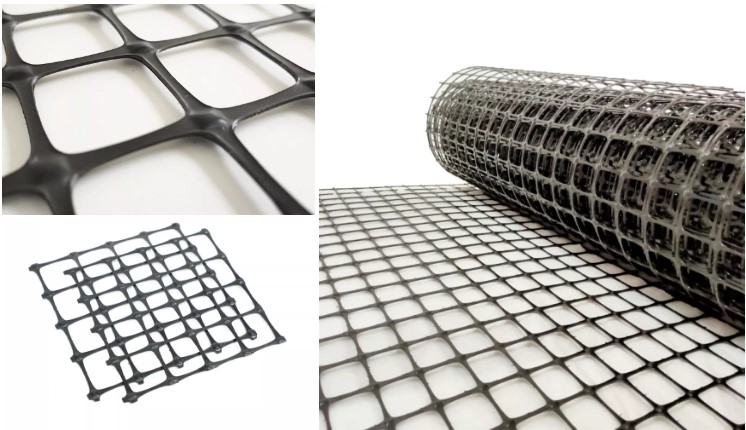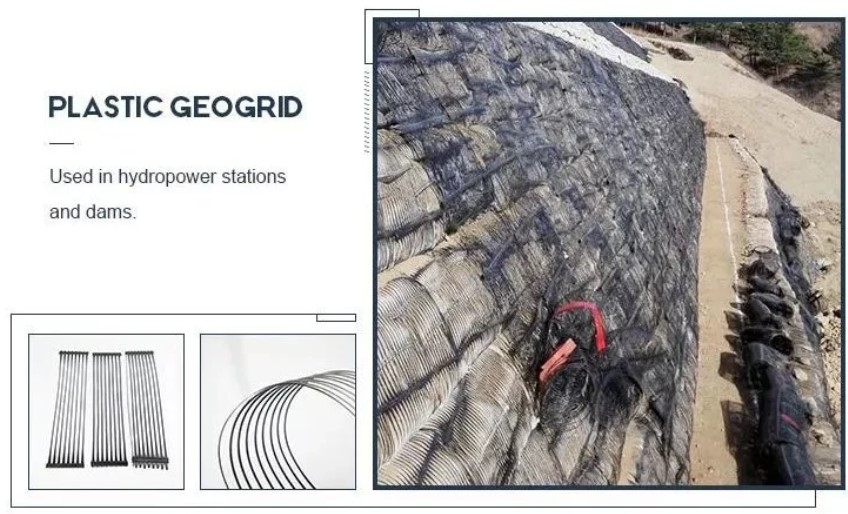plastic geogrid reinforcement
- Compared with the unreinforced embankment, after adding grid layers with different spacings, the overall settlement of the embankment is significantly reduced and the deformation is uniform, and the grid can also limit the lateral displacement of the soil to a certain extent. , to improve and strengthen the overall stability of the embankment.
- As the grid laying spacing decreases and the number of grid layers increases, the earth pressure value at the bottom of the embankment gradually decreases, and the highest decrease can be close to 40%.
- The properties of the grid fill can reduce the settlement of the embankment to a certain extent, that is, to increase the elastic modulus of the embankment fill, or to increase the internal friction angle.
- The properties of foundation soil and geogrid are also important factors affecting the effect of grid-reinforced embankment. With the increase of foundation soil modulus and grid modulus, the reinforcement effect is obviously enhanced.
What is plastic geogrid:
Bidirectional plastic geogrid is another name for biaxially stretched geogrid. From the name, it can be seen that its material is plastic. It is made of polypropylene (PP) or polyethylene (PE) as raw material, and is hot-melted into the machine. Various additives are added, extruded into a plate, punched, stretched longitudinally, and then stretched transversely.

What are the characteristics of plastic geogrid:
As the name implies, the plastic geogrid has the same tensile strength in both directions, that is, longitudinally and laterally. This design method can enable it to bear and diffuse the load from the road surface in a balanced manner in the soil, reducing uneven settlement. The network structure enhances the frictional tension between the filler and the filler, effectively constraining the filler to expand.
What is the use of plastic geogrid:
plastic geogrid is very suitable for the reinforcement and reinforcement of large-area soft soil foundations, such as roads, railways, airports, parking lots, docks, freight yards, dams, bridgeheads, etc., which have very good results, but it does not mean that it is in other aspects. There is no advantage, such as slope protection, wall reinforcement, etc. are also very suitable.
What are the advantages of plastic geogrid:
- Increase the bearing capacity of the road (ground) foundation and prolong the service life of the road (ground) foundation.
- Prevent the road (ground) from collapsing or crack, and keep the ground beautiful and tidy.
- Reduce the thickness of the gravel filling cushion, reduce the height of the embankment, and save the cost.
- Instead of the slope protection mesh pad for greening support, it can strengthen the slope at the same time, which is more firm and stable than the mesh pad.
- With good chemical stability, it can replace metal mesh and be used for false roof mesh in coal mines.
- The construction is convenient, saving time and effort, shortening the construction period and reducing maintenance costs.
plastic geogrids are used in many engineering fields. Although the construction is relatively simple, there are still many details to pay attention to in the actual construction process. These details determine the actual use effect of the grid.

First of all, the ground before the paving of the plastic geogrid should be smoothed. In order to prevent the phenomenon of longitudinal skew, it is best to draw a marking line on the paving layer or hang the line directly according to the width of the grid.
When laying, first fix the ends of the plastic geogrid with iron nails (8 nails per meter width, fixed at an even distance). to prevent skewing.
After the end of the grille is fixed, the plastic stretched geogrid is slowly stretched forward and laid, manually tightened and straightened every 10 meters, and fixed.
After the geogrid is laid, the next step of filling is required. Spread the filler evenly on the grid to ensure a certain thickness, and then use a 6-10-ton road roller to roll from the starting point to the forward direction, just once.
Note: If the geogrid is laid on the middle surface layer and the leveling layer, a steel roller road roller should be used; if the geogrid is directly laid on the concrete road, it should be rolled with a rubber roller road roller.
There are also some situations that need to be paid attention to in the process of geogrid installation. After a roll of geogrid is laid, it needs to be checked as a whole to confirm that there is no problem before laying the next section. The overlapping length of the grille should be 10-15 cm, and it should be fixed with U-shaped nails, and then continue to lay the next section.
